
It’s a fact of life that children get sick – a lot. And unlike adults, kids don’t have a lot of experience (or vocabulary) to help parents understand what they are feeling and how bad. For small children, asking isn’t even an option and parents are stuck trying to decipher what every face, whimper and cry means.
But there are clues a parent can use to help decide when to call the pediatrician and when to head to the emergency room (ER). Here are eight common childhood symptoms with tips parents can use to decide how serious their child’s symptoms might be.

Fever
When it comes to a fever, how high is “high”? It depends on the age of the child. In general, any fever over 102°F in a child over 3 months old is cause for concern according to Denise K. Miller, M.D., a board-certified Emergency Physician at Menorah Medical Center. For infants under 3 months, a temperature above 100.4°F is considered high.
Most low-grade fevers (under 102°F) can be treated safely at home, but call your pediatrician for fevers that don’t respond to medicine, last more than five days or are accompanied by a rash. More investigation into the cause of the fever may be needed.
Take your child to the emergency room for a fever that is:
- Greater than 104°F.
- Above 100.4°F in children under 3 months old — a fever may be your baby’s only response to a serious illness.
- Above 102°F more than 48 hours after a recent immunization.
- Any fever after a medical procedure.
- Not responding to medicine — taking Tylenol® (acetaminophen) or Advil® / Motrin® (ibuprofen) should bring a child’s fever down. (Aspirin should never be given to a child or teenager except on the specific advice of a doctor).
- Accompanied by other symptoms — child is difficult to wake, urinating less, not drinking much, doesn’t want to play, etc.
Anytime you are concerned about a child’s temperature, even if it doesn’t meet one of the above signs, trust your instincts. Head to the nearest emergency room for immediate care or talk to your pediatrician about your concerns.
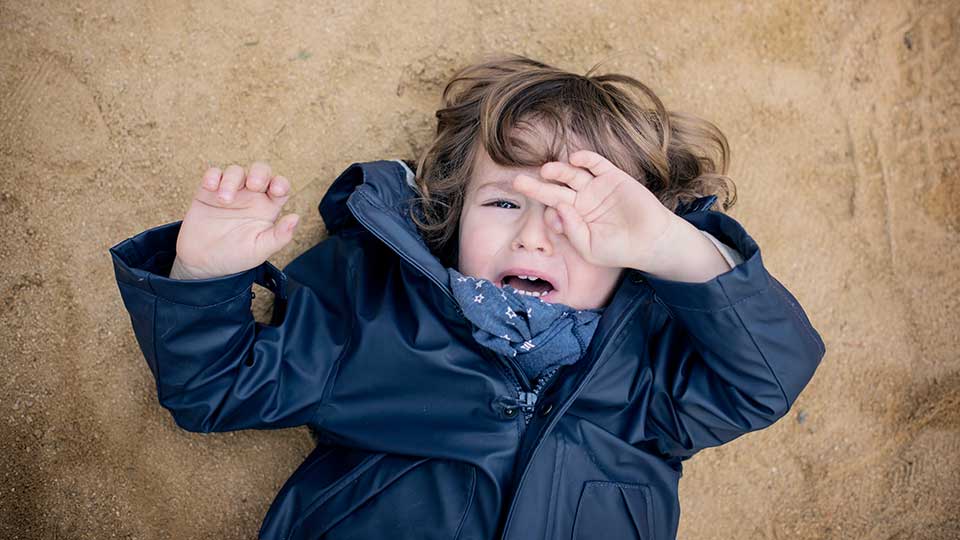
Crying (or Lack of Crying)
Babies cry. Sometimes it seems like they never stop. But is crying a reason to head to the emergency room? Not usually. Most cries are related to normal baby problems like teething, colic or even a sore throat. If your child is crying more than usual or is difficult to console, call your pediatrician.
A bigger concern when it comes to babies is actually lack of crying. Seek emergency medical attention if your baby:
- Has a very weak-sounding cry
- Isn’t responding as usual to your touch or voice
- Fails to make eye contact
- Has muscle twitches or other unusual movements
When it comes to your baby, never ignore your instincts if you think something is wrong. If you are concerned (even if you’re not really sure why), call your doctor or head to the ER.

Vomiting or Diarrhea
Nausea, vomiting, stomach upset and diarrhea are common symptoms in kids (and adults!). Parents should be concerned when these symptoms are severe or the child’s overall condition is affected (e.g., child isn’t eating, drinking or playing). Call your pediatrician for mild vomiting or diarrhea that persists for more than a few days.
Severe symptoms would include forceful (projectile) vomiting or diarrhea that is mostly liquid. Report these to your pediatrician and keep an eye out for these signs to head to the emergency room:
- Listlessness, lethargy or unresponsiveness
- Signs of dehydration: Few tears, dry mouth, sunken eyes (or a sunken “soft spot” for babies)
- Not being able to keep liquids down or can keep it down but aren’t drinking very much at all
- High fever
- Dry heaves (vomiting even when there is nothing left to come up)
- Vomiting blood
- Greenish-yellow projectile vomit in infant
- Burns or irritated skin around the mouth and lips (possible sign of poisoning)
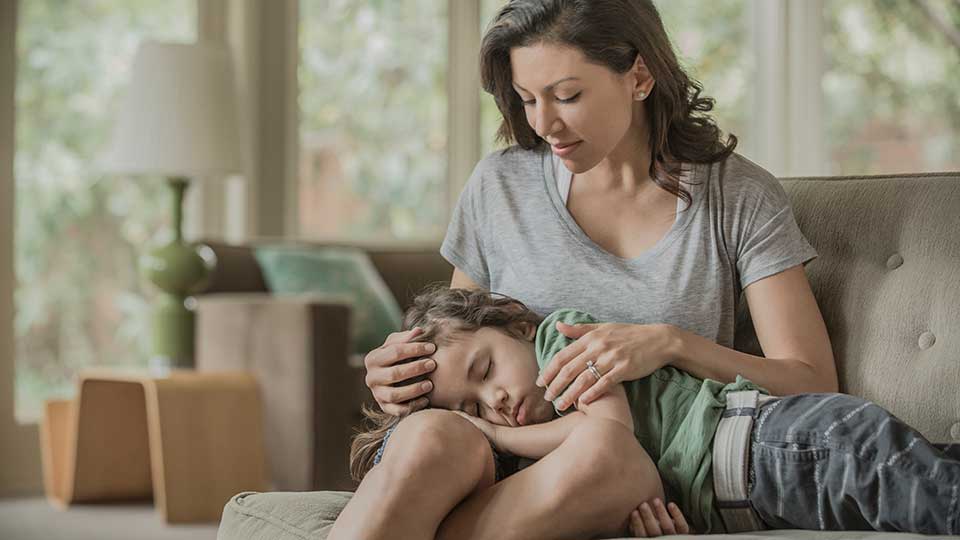
Lethargy & Fatigue
When kids are sick, you should expect some unusual tiredness. But be on the lookout for these signs that your child’s fatigue is cause for concern:
- Sleeping continuously
- Doesn’t wake easily (if a child is unresponsive, call 9-1-1)
- Not responding to normal stimuli (in babies) such as your voice or touch
- Sudden energy loss
- Signs of confusion
Two of the more dangerous causes of lethargy are head injury and accidental poisoning. If there is any reason to suspect either (or your instincts are just telling you something isn’t right), seek emergency medical attention.
For less severe fatigue, talk to your doctor – especially if it doesn’t get better after a day or two or once your child’s other symptoms resolve. It could be a sign of an underlying medical condition.
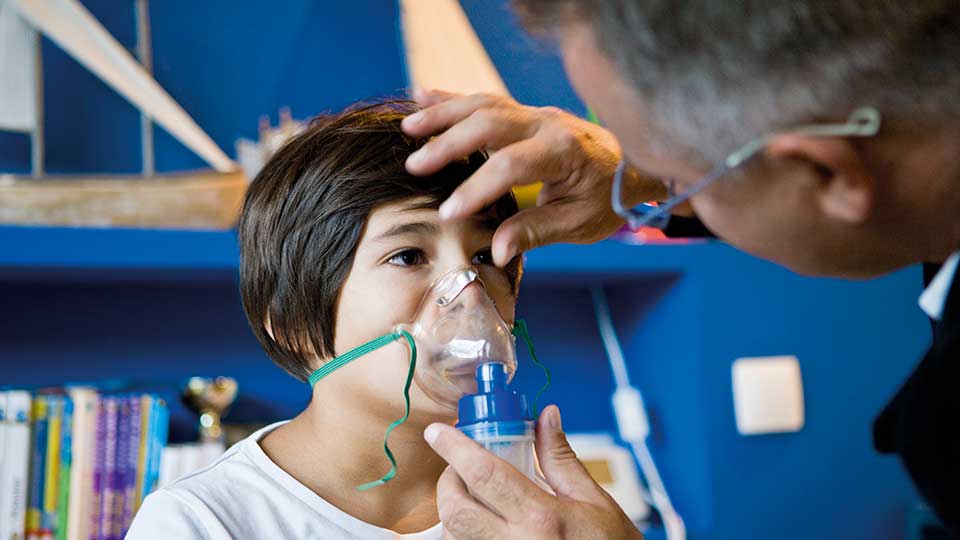
Breathing Problems
Difficulty breathing can take many forms, from persistent coughing to wheezing to labored breathing. Causes range from the mild cold to life-threatening allergic reactions, with many, many more in between. Call your physician to report any new breathing problem in your child.
Call 9-1-1 or head to the emergency room for any severe breathing problem, such as:
- Breathing rapidly
- Gasping for breath
- Needing to sit up to breathe (can’t get a breath when lying down)
- Breathing problems that appear with swelling, rash or other signs of an allergic reaction
- Blueish lips or fingernails
- Difficulty speaking
Allergies, asthma and other chronic conditions can cause repeated breathing-related symptoms. If your child has such a condition, make sure you keep any needed prescriptions in stock and know when to seek emergency medical attention (often called an Action Plan).
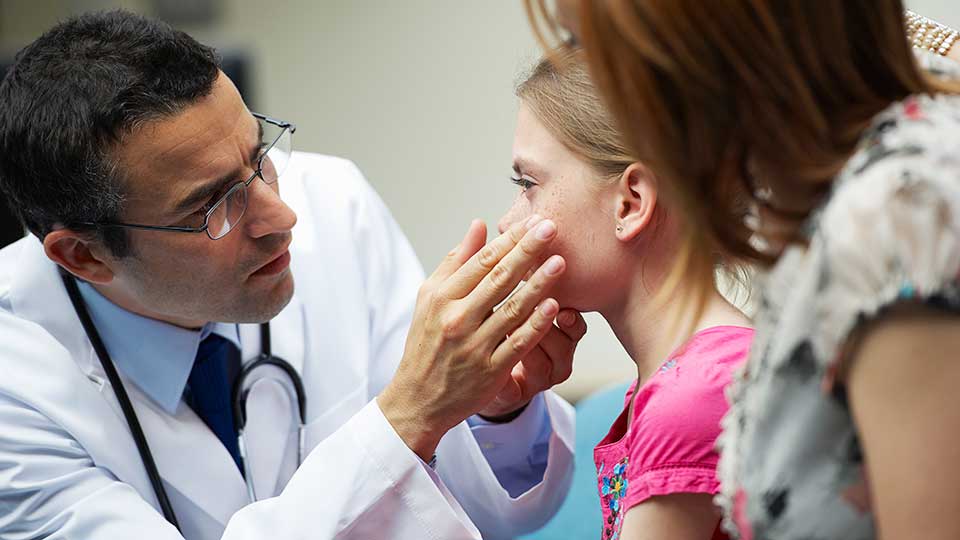
Head Injury
Even after your baby proofing and helmet lecturing – kids manage to find a way to bump their heads. Most of these will cause only external injuries, such a bruises or cuts to the scalp. Cuts that require stitches will mean a trip to the ER. But most other injuries, even a “goose egg” of a bruise, will heal itself over time.
Call a doctor for any head injury to an infant or if your child loses consciousness (even briefly) or vomits after a head injury. Head to the emergency room if your child shows any of these symptoms after bump to the head:
- Repeated vomiting
- Unusual tiredness or weakness
- Won’t stop crying or is hard to console
- Difficulty walking or talking
- Memory issues or disorientation
- Abnormal breathing
- Clear fluid or blood coming from the nose, ear(s) or mouth
- Speech problems
- Pupils of unequal size or that don’t respond to light
- Neck pain or stiffness
- Seizure
If you suspect a neck or spine injury, do not move the child and call 9-1-1. Do your best to keep the child calm and still until help arrives, apply a clean bandage to any head bleeding but do not apply direct pressure if you think the skull might be damaged.

Headache
Most headaches in children are not cause for concern. But there are a few signs that something more serious might be going on. Minor headaches go away with over-the-counter medicines and/or rest. But if your child is having minor headaches often, talk to your pediatrician.
Head to the emergency room for severe headaches that:
- Don’t improve with medicine and/or rest
- Last several hours
- Is severe enough to limit child’s normal activities
- Occur with other neurological symptoms, such as confusion, blurred vision or trouble walking
- Occur with fever, vomiting, confusion or a stiff neck
- Occur with a whole-body rash that doesn’t change color when you press on it
A headache that occurs following a head injury should also be followed for those related warning signs.
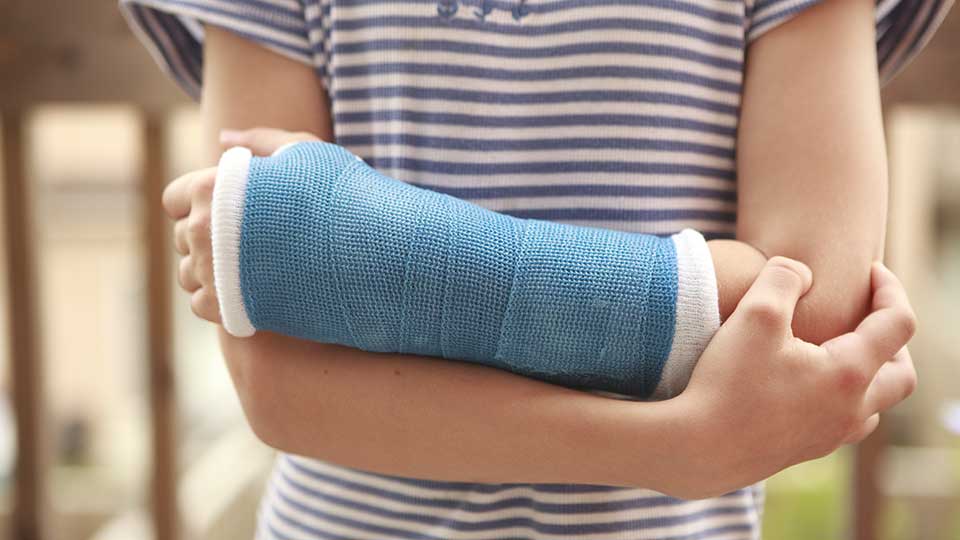
Broken Bone or Dislocation
The way many kids act after a bump or fall, you’d think every bone in their body was broken. So how do you know when it’s time to head to the emergency room? Here are some signs that a bone may be broken (instead of the also painful bruise or sprain):
- The pain gets worse when the area is moved, touched or pressed on
- An unusual bump or change in shape of the bone (e.g., it’s bent where it shouldn’t be)
- You or your child heard a “snap” or grinding noise when the injury occurred
- The child can’t put weight on the injury (e.g., standing on an injured leg)
- The child also shows signs of shock like feeling faint, dizzy or nauseous
Skin swelling and discoloration can happen with breaks and also less serious injuries. But if either is severe, call your pediatrician.
If the accident involved a head bump, the child should also be followed for warning signs of an internal head injury.

Trust Your Instincts
The recurring theme across all these symptoms is that you should trust your instincts. As a parent, you know your child best, so whenever you get a sense that something isn’t right you should talk to your pediatrician (or head to your closest ER).
If you don’t have a pediatrician or need to talk to someone quickly, you can also call the free nurse helpline at 1-800-386-9355 to talk to a registered nurse 24 hours a day, 7 days a week – a free service of HCA Midwest Health.
$webqFacilityNumber
Need a Physician?